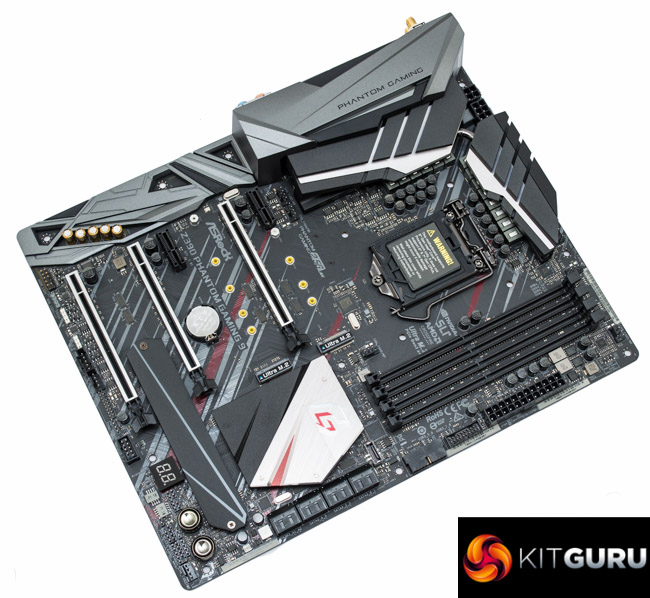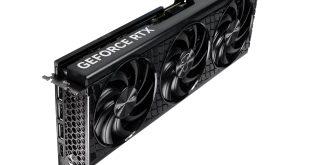Just as with Intel's Z370 chipset any prospective buyers of Z390 motherboards are spoilt for choice, particularly anyone with the budget to accommodate an Intel Core i9 9900K. ASRock's Z390 Phantom Gaming 9 is by no means the most expensive motherboard on the market but it covers all the bases of a premium option, yet leaving more budget left over for the GPU, system memory or other components than many of its rivals.
ASRock has focused on delivering a lot of connectivity across the spectrum, rather than focusing on gaming-specific features as the name might suggest.
In networking ASRock provides three wired connections, one 2.5 Gigabit and two 1 Gigabit, and a WiFi solution that includes Bluetooth 5.0. In storage terms there are three M.2 slots, eight SATA III ports and 16 USB ports of various iterations. In terms of customisation there are eight fan headers and three RGB headers, in addition to the three onboard RGB lighting zones.
Quantity is the focus of the VRM too with 10+2+1+1 phases for the VCore, iGPU, VCCSA and VCCIO, respectively. Our testing demonstrates that these perform well when at stock or when overclocking and should be more than sufficient for most users' needs.

ASRock has been somewhat controversial with its manipulation of Intel's Turbo behaviour to enhance performance results by extending the Turbo duration to essentially last forever. That said most Z390 coverage so far indicates all motherboard vendors appear to be “doing it” to some extent, it is just that ASRock is more coy about the process and doesn't inform the user performance will be enhanced, neither does it give the user a way to disable it and default to “stock” Intel specification.
This might sound like nit-picking but it could have real-world implications whereby a system owner does not understand this is happening and is confused as to why the system is overheating or producing more heat than was anticipated. That's in addition to the cumulative economic impacts to all consumers of this increase power usage (i.e. higher electricity bills), as well as the related negative environmental impacts.
There are cooling implications from taking the CPU power draw from about 95-watts (4.2GHz all-core Turbo) to 160-watts (4.7GHz all-core Turbo) that users need to be aware of. It also places additional stress on the VRMs which, from our analysis, aren't the most efficient in the first place with approximately 83~91% efficiency up to 1.3 volts, anything beyond that, such as 1.4 volts, would decrease efficiency even further.
Turbo shenanigans aside, the ASRock Z390 Phantom Gaming 9 is a very generously equipped motherboard that offers better “bang for the buck” than many of its rivals. It's possible that it even has “too much” equipment and connectivity that a power user would struggle to find a use for. ASRock's own Z390 Taichi could be a more sensible and affordable way of getting a similar class of motherboard, albeit without the 2.5G LAN solution and a few other things.
The ASRock Z390 Phantom Gaming 9 has a retail price of £273.49 in the UK and is usually sold with a 2 year warranty.
In the USA it can be had for $268.99 at Newegg and usually has a 3 year warranty.
Pros:
- Extensive networking connectivity – 2.5 Gigabit, dual 1 Gigabit and 1700Mbps AC WiFi with Bluetooth v5.0
- Triple M.2 slots
- High quality audio
- Ample SATA and USB connectivity
- 8 fan headers
- 3 onboard RGB lighting zones with 3 RGB headers
- Heat-pipe cooling for the CPU VRM
- Diagnostic tools – onboard power/reset buttons, dual BIOS, clear CMOS button, debug code reader
- Detailed VRM sensors
- High phase count CPU VRM with good quality components
Cons:
- No opt out option for automatic performance enhancement which greatly increases power consumption
- VRM efficiency isn't the best
KitGuru says: Bells, whistles and then some; the ASRock Z390 Phantom Gaming 9 is an exuberant display of connectivity and features.
 KitGuru KitGuru.net – Tech News | Hardware News | Hardware Reviews | IOS | Mobile | Gaming | Graphics Cards
KitGuru KitGuru.net – Tech News | Hardware News | Hardware Reviews | IOS | Mobile | Gaming | Graphics Cards



